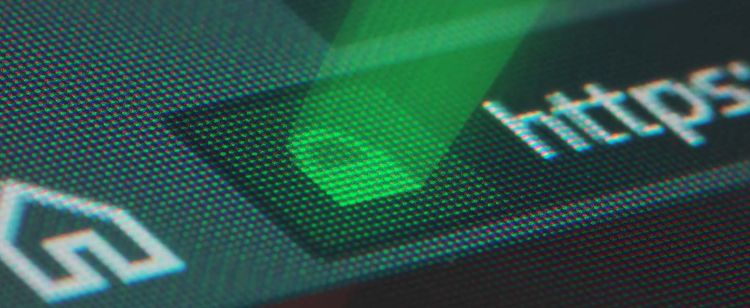Edge Security
5 Ways to Prove Your Website is Secure
August 24, 2023
7 minute read

With nearly 5.5 billion unique daily internet users there is a massive amount of digital traffic flowing at any given moment. On top of that, just last year in 2022, the ecommerce retail market generated $856.8 billion in revenue in the United States alone. If you don’t know how to secure a website, your brand could be missing out on a huge revenue stream.
Having a secure website helps consumers trust your brand, ensures that data can’t be intercepted, and ultimately protects both your consumers and your company.
Sign up for our newsletter!
While learning how to secure a website with the tips below, keep in mind that there are several layers involved in a comprehensive cybersecurity strategy.
To get a better idea of where your cybersecurity posture is now, and how it compares to the industry standards, review DOT Security’s Cybersecurity Checklist: How Covered is Your Business?
1. SSL Certificates
An SSL certificate is the first thing you need when looking to secure your website. SSL (Secure Sockets Layer). SSLs are often offered by credited web-host platforms and when they’re added to your website, you’ll notice two things.
First, you’ll notice a little padlock icon appear in the corner of the search bar, and secondly, instead of your URL leading with HTTP, it will instead lead with HTTPS. The S quite literally stands for secure.
SSLs are crucial for consumer trust, though, because they prevent hackers from seeing or intercepting data that’s transferred to and from the website. This is specifically vital in regards to ecommerce which relies on digital sales. Without an SSL your customers financial information could easily be breached.
2. Commit to Regular Site Updates
Site updates are another part of the puzzle when it comes to keeping your brand website safe and secure. Outdated plug-ins, or other software on your site can open up vulnerabilities that can be exploited by hackers or malicious actors.
Just earlier this year, there was a major vulnerability discovered in the popular WordPress plugin, Ultimate Member. The hole in the code allowed hackers to create shadow administrator accounts with top-level privilege and essentially take complete control over the site.
Users of the plugin were advised to disable it from their site until the vulnerability could be patched with a sufficient security update. This was a vulnerability found in the most updated version of the software, so just imagine those hackers can exploit in outdated software that’s active on your site.
3. Password Policies
Password policies are useful for the entirety of the organization, but certainly pertain to keeping your website secure as well. By implementing strong password policies, you’ll reduce the risk of social engineering scams.
Social engineering scams are those like phishing emails, they’re orchestrated attacks against human-weak-points in security strategies. Strong password policies, however, greatly reduce the risk of a social-engineering scam taking root.
A few of our preferred password tips include:
-
Creating longer passphrases instead of passwords.
-
Requiring regularly updated passwords on a set schedule.
Using these pillars to create your password policies should help protect your site against a variety of modern cyberattacks.
4. Empower and Educate Staff
Right alongside your password policies should be employee education and awareness initiatives on cybersecurity practices.
By keeping your staff updated on general best practices regarding site security and other network-security, you empower them to be the first line of defense for your organization. Of course, your entire staff doesn’t need to be comprised of cybersecurity experts, however emphasizing employee network security education instills a culture of security that can keep your whole system safe from threats.
There are several ways to instill a culture of security into your organization with employee education. Regular trainings on social engineering, occasional modules, and updates on current threats or scams to look out for can all keep your staff on their toes and help them stay out of cyber trouble.
5. Embrace Comprehensive Cybersecurity
As mentioned a bit earlier, comprehensive cybersecurity requires a layered approach, and the best way to keep your site secure is by protecting your entire network with modern cybersecurity strategies built to defend against modern cybersecurity threats.
When looking at a more comprehensive approach to cybersecurity, there’s a flurry of factors to consider. One of these is industry compliance and regulation, and it’s growing in its importance. You might already be familiar with some standardized security regulations like HIPAA or CMMC, but more and more industries are adopting a set of standardized cybersecurity regulations as well.
Staying compliant with industry regulations, investing in 24/7 network monitoring, and creating disaster and recovery plans all play into the larger, more comprehensive cybersecurity picture.
Final Thoughts on Site Security
If you want to secure your website and protect it against modern day cyberattacks, you need to think about cybersecurity and site security best practices. From obtaining an SSL certificate for the security of your website, to establishing password policies, and training staff, building a culture of security is best how to secure a website.
Securing your website is crucial in earning and retaining the trust of online consumers and especially online shoppers. People who spend their money online want to spend it on trustworthy websites where they need not worry about identity theft or the interception of their financial information.
By prioritizing customer security, you increase your chance of conversion, retention, and growth all at once.
If your website is already as secure as can be, put your cybersecurity posture to the test against DOT Security’s Cybersecurity Checklist: How Covered is Your Business?
